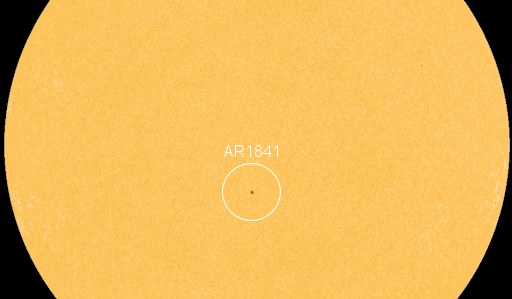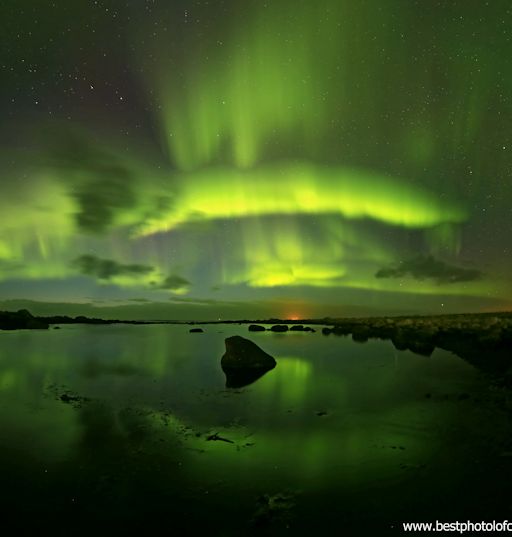WATCH OUT FOR THE HARVEST MOON: According to folklore, this week's full Moon is the "Harvest Moon." Find out from Science@NASA what makes it special: full story, video.
LONELY SUNSPOT, QUIET SUN: The sunspot number has dropped to its lowest level of the year. Solitary sunspot AR1841 sits all alone at the center of an otherwise blank solar disk. It is quiet and poses no threat for strong flares:
NOAA forecasters estimate a scant 1% chance of M- or X-class solar flares during the next 24-48 hours. If the forecast holds, the sun will continue a spate of deep quiet that has lasted for more than a week, nearly-flatlining the sun's x-ray output.
The quiet spell is a bit strange because 2013 is supposed to be a year of solar maximum, with lots of flares and sunspots. Supporting this view are data from NASA-supported observatories which show that the sun's magnetic field is poised to flip--a long-held sign that Solar Max has arrived. Nevertheless, solar activity is low.
One possible explanation is that Solar Max is double-peaked and we are in the valley between peaks. If so, solar activity could surge again in late 2013-2014. No one can say for sure, though. Researchers have been studying sunspots for more than 400 years, and we still cannot predict the behavior of the solar cycle. Continued quiet or stormy space weather? Both are possible in the weeks and months ahead. Solar flare alerts: text, voice.
Realtime Space Weather Photo Gallery
ARCTIC AURORAS TONIGHT? NOAA forecasters estimate a 45% chance of polar geomagnetic storms on Sept. 17th in response to an incoming solar wind stream. When the solar wind arrives, Arctic skies could look like this:
The display was sparked by a similar solar wind stream on Sept. 13th. "As soon as it was dark enough to see the Lady Aurora, we went out to meet her," says photographer June Grønseth of Laukvik, Lofoten, Norway. "As always, it was a huge pleasure to see her dance, and just leave everything else behind."
Sky watchers around the Arctic Circle should be alert for "Lady Aurora" on Sept. 17th as the solar wind approaches. Aurora alerts: text, voice.

Solar wind
speed: 391.9 km/sec
density: 3.4 protons/cm3
explanation | more data
Updated: Today at 2026 UT
X-ray Solar Flares
6-hr max: B2 1919 UT Sep17
24-hr: B3 0209 UT Sep17
explanation | more data
Updated: Today at: 2000 UT
![]()
Daily Sun: 17 Sep 13
The Earthside of the sun is very quiet. Solar activity remains low. Credit: SDO/HMI
![]()
Sunspot number: 23
What is the sunspot number?
Updated 17 Sep 2013
Spotless Days
Current Stretch: 0 days
2013 total: 0 days (0%)
2012 total: 0 days (0%)
2011 total: 2 days (<1%)
2010 total: 51 days (14%)
2009 total: 260 days (71%)
Since 2004: 821 days
Typical Solar Min: 486 days
Update 17 Sep 2013
The Radio Sun
10.7 cm flux: 95 sfu
explanation | more data
Updated 17 Sep 2013
![]()
Current Auroral Oval:
Switch to: Europe, USA, New Zealand, Antarctica
Credit: NOAA/POES
![]()
Planetary K-index
Now: Kp= 2 quiet
24-hr max: Kp= 2 quiet
explanation | more data
Interplanetary Mag. Field
Btotal: 7.2 nT
Bz: 1 nT south
explanation | more data
Updated: Today at 2026 UT
![]()
Coronal Holes: 17 Sep 13
Solar wind flowing from this coronal hole could reach Earth on Sept. 22-23. Credit: SDO/AIA.






